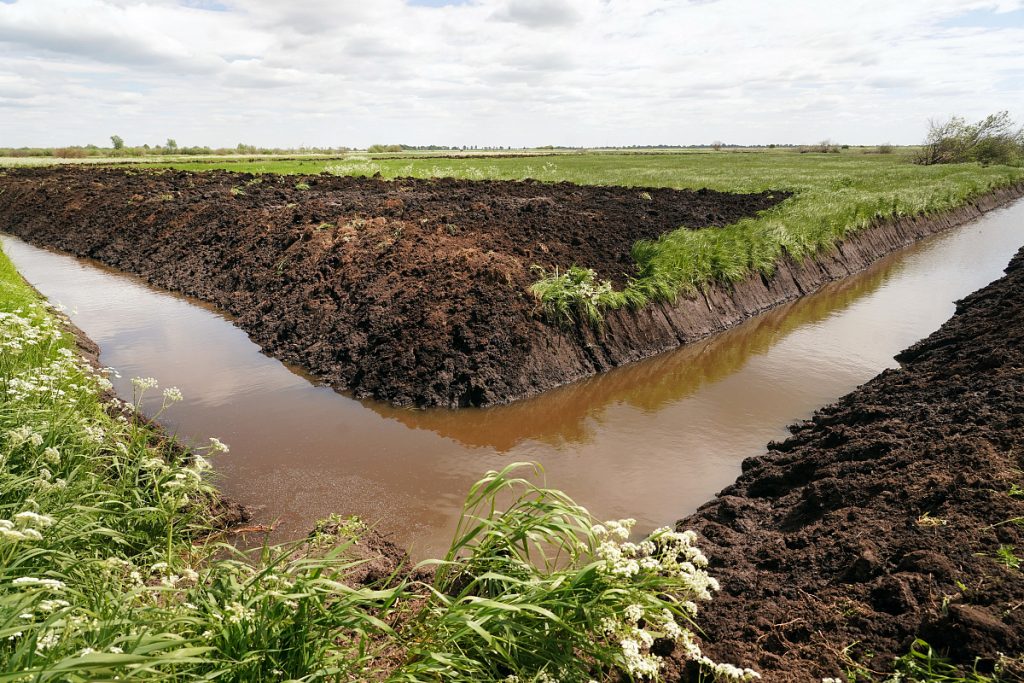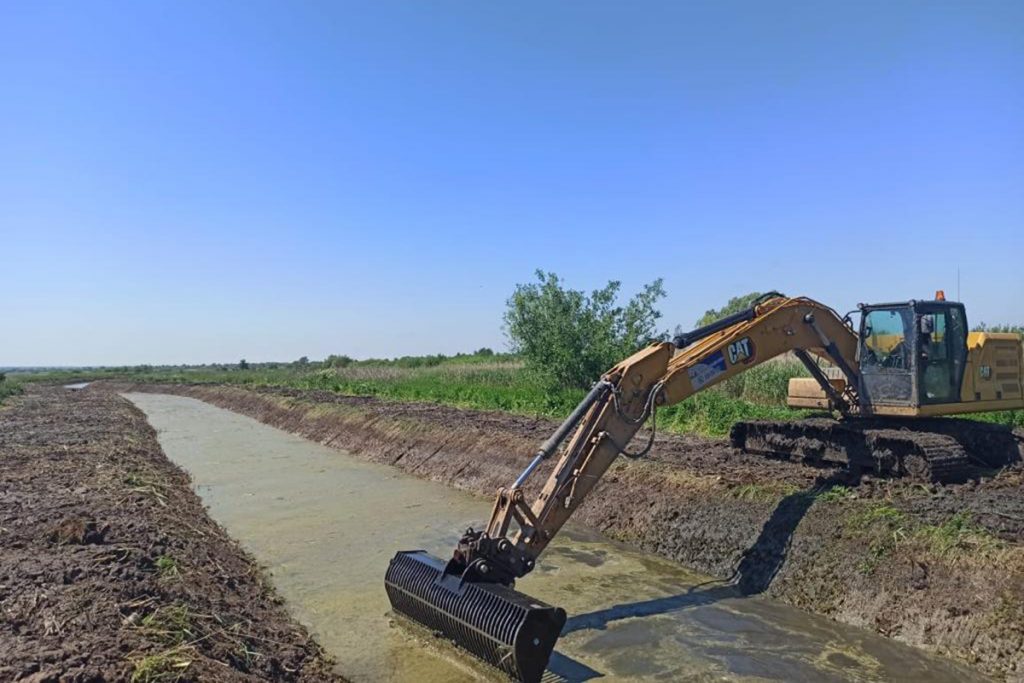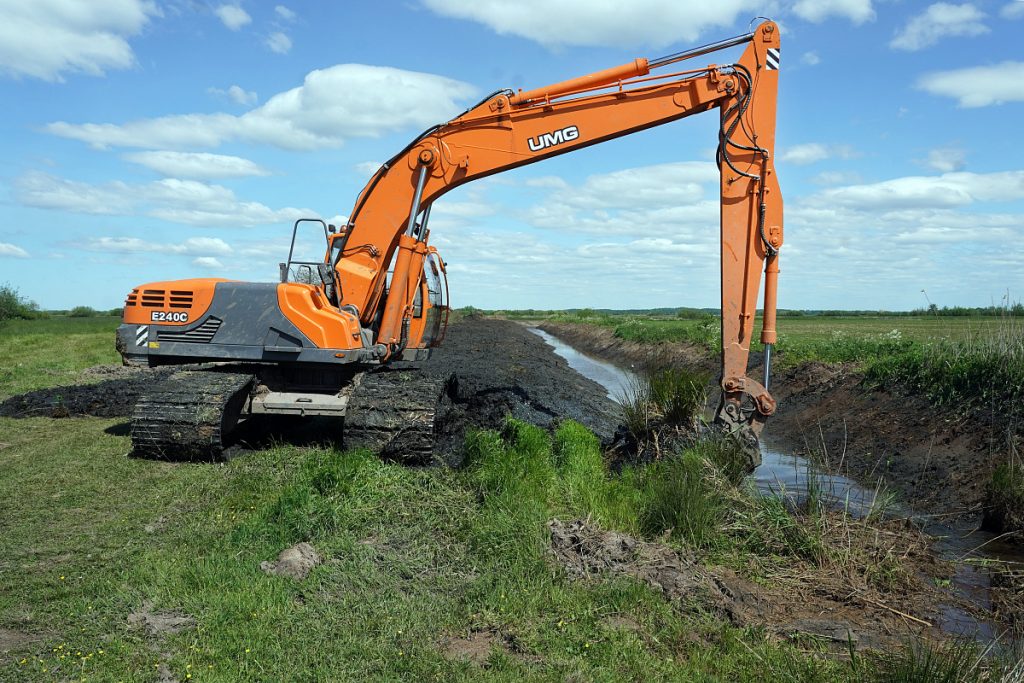Reclamation institutions and activities in the Kaliningrad region
Reclamation institutions and activities in the Kaliningrad region

The reclamation complex of the Kaliningrad region is one of the largest in the Russian Federation. For about 19 years, the Federal State Budgetary Institution “Administration of Land Reclamation and Agricultural Water Supply in the Kaliningrad Region (FSBI “Administration Kaliningradmeliovodkhoz”) has been developing and maintaining melioration systems in a working condition and is the guarantor of stable production of agricultural products in the natural and climatic conditions of the region.
The main purpose of the “Kaliningradmeliovodkhoz” is to create the necessary conditions to increase production of high-quality agricultural products on the basis of the restoration and improvement of soil fertility and agricultural land and the performance of complex agrotechnical, irrigation and drainage, agro-forest reclamation , water management and organizational measures, operation of reclamation systems transferred to the institution for operational management, and implementation of Federal target programs in the territory of the Kaliningrad region.
Today “Kaliningradmeliovodkhoz “consists of 4 structural branches for the operation of state systems and a head office. More than 200 people work here, who have accumulated vast invaluable experience in land reclamation and whose daily efforts manage not only to preserve, but also to develop the land reclamation complex of the Kaliningrad region .The department is subordinated to the Ministry of Agriculture of the Russian Federation and reports directly to the Department of Land Reclamation, Land Policy and State Property.
Today the Kaliningrad region occupies one of the leading places among the regions of the country in terms of the volume of drained areas. Drainage of the fields of the region exceeds 257.3 thousand hectares. It is thanks to the draining of land in the region that the yield of agricultural crops increases every year and the standard of living of the rural population rises.
The institution has 268 stationary electrified pumping stations, in which 1,110 units with a total capacity of 609.5 MW are installed, 60 reservoirs with a capacity of 0.5 to 115 million m3 with a total volume of 577 million m3 of water, 1002 kilometers of main and distribution channels, more than 500 complex hydraulic structures.
For a comprehensive solution to the problems of land reclamation and carrying out restoration work at the most problematic regional land reclamation facilities, the state budgetary institution “KaliningradMelioration” was created.
The activities of the institution are aimed at ensuring the protection of the lands of the Kaliningrad region from flooding, creating conditions for effective agricultural production by restoring and increasing soil fertility through reclamation measures, operating hydraulic structures of reclamation systems, taking measures to prevent the negative effects of water and eliminate its consequences.
The main tasks of the institution are:
- performing the functions of a customer-developer for design, construction, reconstruction, overhaul and current repairs, operation and current maintenance of reclamation systems and separately located hydraulic structures on the territory of the Kaliningrad region;
- measures for the implementation of state programs in the field of land reclamation;
- repair, maintenance and operation of reclamation systems and separately located hydraulic structures;
- implementation of measures to prevent the negative impact of water and eliminate its consequences in relation to water bodies;
- carrying out irrigation and drainage activities;
- carrying out crop and technical land reclamation;
- carrying out chemical land reclamation;
- development of design and estimate documentation for the repair of objects of amelioration and water management complex;
- monitoring the technical condition of amelioration systems and water bodies;
- carrying out work on prevention and elimination of accidents at reclamation systems, separately located hydraulic structures and water bodies;
- carrying out an inventory of reclamation systems of regional property
- carrying out seasonal field work.
The main trends and prospects for the development of the melioration system in the Kaliningrad region
The area of drained land in the Kaliningrad region is 1,048 thousand hectares, including:
- 594.5 thousand hectares of agricultural land;
- 229.7 thousand hectares of state forest resources;
- 23.8 thousand hectares of municipal land and other categories.
The irrigated area is 1.8 thousand hectares.
Characteristics of drainage systems of the Kaliningrad region
| Name of hydraulic engineering and other structures | unit of measurement | number of all | Including federal property |
| Regulated water intakes | km | 1365 | 1311 |
| Trunk and conducting channels | km | 11865 | 5012 |
| Open control channels | km | 13566 | 15 |
| Number of structures on water intakes and canals | PC | 20692 | 408 |
| Dams | km | 709 | 681 |
| Closed drainage network | km | 362517 | 183 |
| The number of structures on a closed drainage network | PC | 69941 | 46 |
| Bilge pumping stations | PC | 114 | 93 |
| Service roads | km | 131 | 130 |
| Power lines (for maintenance of pumping stations) | km | 29 | 29 |
Reclamation status of drained agricultural lands in the Kaliningrad region as of 01.01.2021:
- Good – 38.0 thousand hectares (6%);
- Satisfactory – 403.6 thousand hectares (68%);
- Unsatisfactory – 152.9 thousand hectares (26%)
On an area of 269.8 thousand hectares (45%), major repairs and reconstruction are required
The main trends in the development of the melioration system in the Kaliningrad region of federal ownership and land drainage are as follows:
- Growth in current and capital reclamation work for agricultural land (the volume of flood control measures increased from 10 million rubles in 2015 to 281 million rubles in 2020);
- Increase in the area of used farmland from 415.4 thousand hectares up to 479.2 thousand hectares in 2020, including sown areas from 246 thousand hectares in 2015 to 297 thousand hectares in 2021;
- Reconstruction of 6 dams with a length of 58.9 km and 13 pumping stations on polders from 2013 to 2020, overhaul of 4 pumping stations;
- Improvement of the technical condition of amelioration systems by 20-30% from 2015 to 2020;
- Reducing of unsatisfactory amelioration condition of agricultural land from 178.2 thousand hectares in 2015 to 152.9 thousand hectares in 2020;
- Strengthening the material and technical base of the operating organization in 2015-2020 (39 units of equipment were purchased).
Restoration and maintenance of land reclamation facilities
Since 2018, the Kaliningrad Region has been actively restoring and developing the land reclamation system, and hydro-technical and land reclamation facilities are being brought into working order. For this purpose, the land reclamation industry is being financed from the federal budget. In addition to the direct financing of such work from the regional budget, subsidies are provided for the costs of agricultural producers (farmers) for the restoration and maintenance of amelioration facilities. At the same time, agriculture is considered as one of the most important areas of the socio-economic development of the region, and the development of crop production and an increase in the volume of agricultural production in general are associated with the improvement of land reclamation.
The subsidy mechanism is to reimburse part of the costs of land reclamation by farmers, which reduces the financial burden on their own budget.
Subsidizing is carried out in several directions:
- reimbursement of a part (up to 60%) of the costs associated with the implementation of plant and technical works on lands involved in agricultural production;
- reimbursement of a part (up to 90%) of the costs associated with liming acidic soils on arable land;
- reimbursement of a part (up to 50%) of the costs of repairing open reclamation canals and closed drainage
- reimbursement of a part (up to 70%) of the costs of irrigation and drainage activities (construction, reconstruction and technical re-equipment of irrigation and drainage systems, hydraulic structures, etc.).
Subsidizing land reclamation is extremely important for the Kaliningrad region, since its territory is located in the zone of excessive moisture, it accounts for 23% of all drained and 70% of polder lands in Russia, and almost all agricultural land is reclaimed.
Within the framework of the state program of the Kaliningrad region “Development of agriculture” measures were subsidized from the regional budget in 2020 to repair reclamation canals and closed drainage with a total length of 692.6 km in the amount of 109.866 million rubles to support agricultural producers. This made it possible to improve the reclamation state of agricultural lands on an area of 11.07 thousand hectares.
In 2020, the State Budgetary Institution “Kaliningrad melioration” repaired 88.17 km of conductive channels of regional property at the expense of the regional budget in the amount of 121.6 million rubles. This made it possible to ensure the protection of land from flooding on the area of 3.5 thousand hectares.
From the consolidated budget in 2020, 23.532 million rubles were allocated for chemical reclamation (liming) of acidic soils, 2.2 thousand hectares of farmland were improved. Plant and technical activities were carried out on an area of 2.4 thousand hectares, the amount of subsidies amounted to 35.39 million rubles.
In 2020, work was carried out to reconstruct a closed drainage network on an area of 87 hectares. The amount of subsidies paid amounted to 11.9 million rubles. In 2020, at the expense of federal funds, over 443 km of inter-farm canals were repaired, almost 174 km of water protection dams were restored, eight drainage pumping stations were reconstructed, and 106.8 million rubles were allocated to subsidize the costs of farmers.
In 2021, 104 million rubles were allocated from the regional budget to subsidize the costs of agricultural producers, which will allow to repair 600 km of closed drainage and reclamation canals. The regional structure “Kaliningrad melioration” plans to repair 119 km of reclamation canals, ensure the maintenance and operation of ten drainage pumping stations and five water protection dams. This will protect agricultural land and settlements on an area of 5,396 hectares.
In 2021, it is planned to allocate 333.4 million rubles for the reconstruction of 9 pumping stations of federal ownership and flood control measures.
Prospects for the development of land reclamation in the Kaliningrad region:
- Restoration of the operability of reclamation systems on agricultural lands due to ongoing work (repair and flood control measures);
- Reconstruction of hydraulic structures of reclamation systems;
- Comprehensive areal reconstruction of drainage systems on agricultural lands (closed and open drainage, open conduction and main network, pumping stations, dams and hydraulic structures);
- Restoration and reconstruction of the drainage network on the lands of the forest fund;
- Reconstruction and dredging of receiving rivers flowing into the Curonian, Kaliningrad bays, the Baltic Sea;
- Carrying out measures to exclude or reduce wind surges of water from the sea and bays (reconstruction of existing structures in the water area, construction of new polder systems);
- Carrying out measures for engineering protection of territories with new settlements from flooding and flooding;
- Reconstruction and construction of environmentally separate and common drainage-humidification systems subsoil irrigation and moistening at polders;
- Construction of water circulation reclamation systems (the most effective way to prevent the removal of nutrients beyond the drained areas).
- Digitalization of reclamation systems and reclaimed lands in the Kaliningrad region.

Questions to representatives of the institution (interview)
Question 1. How do you assess the environmental condition of water bodies, rivers and canals and water pollution in them on the territory of the Kaliningrad region?
This is not within the competence of the institution. The main source of pollution is domestic wastewater. The function of the institution is to monitor the technical condition of amelioration systems and water bodies.
Question 2. Does your organization carry out any environmental activities in addition to the main activity of reclamation of agricultural fields?
The main environmental measures are flood control measures, seasonal field work (for example, mowing berms and canal beds from small trees and shrubs).
Question 3. Are you familiar with environmental measures, practices and techniques to improve water quality in rural areas, reduce the flow of nutrients from agricultural fields into water bodies? Please name them.
One of the tasks of the institution is the reconstruction and construction of environmentally friendly separate and combined drainage and humidification systems with subsurface humidification and sprinkling on polder and gravity zones.
To obtain high and stable yields on reclaimed lands, a systematic application of mineral fertilizers is required to replace the nutrients taken out with the harvest. The most effective way to prevent the removal of mineral nutrition elements outside the drained territories is the construction of water circulation systems.
The advantage of the drainage and humidification water circulation system is the protection of receiving rivers from pollution. This is achieved by the fact that the drainage wells are equipped with storage tanks made in the form of horizontal pipes connected to the bottom of the drainage wells.
Question 4. What organizations do you work with in your daily practice?
With all types of regional organizations: Administration of Agriculture, interaction with the Ministry of Natural Resources and Environment, the Ministry of Forestry, Administration of road management, municipal administrations, farms on whose lands there are land reclamation facilities (regional or federal), agricultural producers in the territories of rural and urban districts, private contractors, etc.
Question 5. Have you ever interacted with environmental organizations, if yes on what issues? Have you (your organization) participated in environmental projects, is there any interest?
In recent years, close interaction with the Ministry of Natural Resources and Environment has been carried out in terms of measures aimed at identifying unauthorized wastewater discharges. At the same time, the Ministry of Natural Resources and Environment prepares design documentation for clearing contaminated water bodies, and land reclamation institutions carry out the work.
Question 6. What experience of the international project Waterdrive on environmental protection in rural areas and water management do you find most useful?
From the project, we can draw on the experience of other partners in using measures to reduce eutrophication, as well as methods of approach to solving this problem. Research institutes and regional governments should be the leaders in this connection, since such tasks are difficult to implement at the municipal level.
Authors:
Vladimir Puntusov, Deputy Director of the Kaliningradmeliovodkhoz
Vadim Demkov, Head of the Melioration Department of the Ministry of Agriculture of the Kaliningrad Region
Co-author and interview:
Irina Popova, Guryevsk Municipality, Kaliningrad region
Mikhail Ponomarev, IAERD of SPC RAS
Photos: Press Service of the Kaliningrad Region Government



